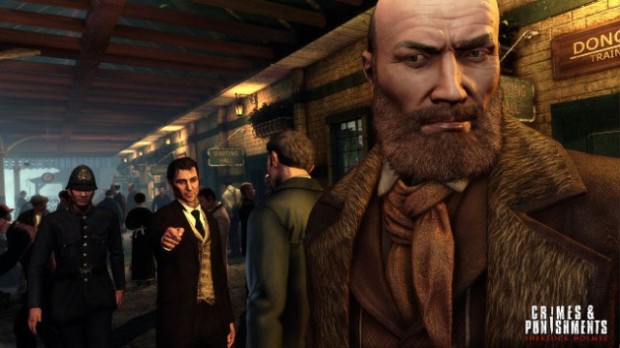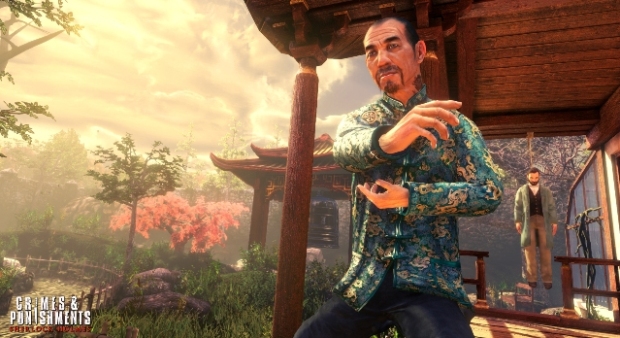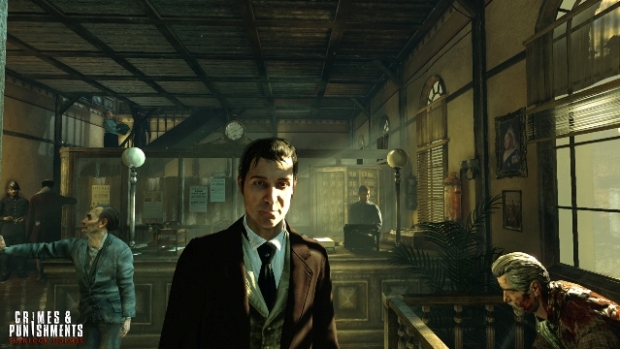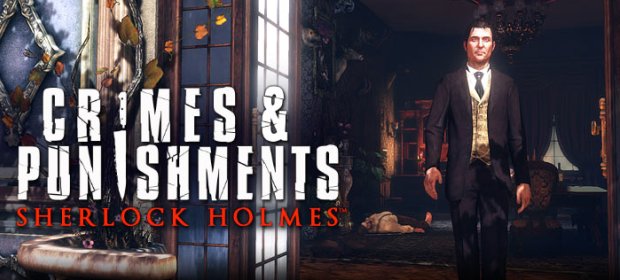Sherlock Holmes has recently become a force to be reckoned with in entertainment. The BBC TV series is arguably one of the most popular shows they’ve aired in recent years, the Robert Downey Jr movies received solid reviews and the Elementary TV show with Jonny Lee Miller and Lucy Liu is incredibly entertaining despite the questionable casting. With so much great Sherlock based entertainment. Sherlock Holmes: Crimes and Punishments has a lot of expectation riding on it.
The main source of Sherlock’s popularity are the fascinating mysteries, usually with incredible twists that you don’t see coming. Crimes and Punishments features a total of 6 cases to solve and, while they may not be on the same level as other Sherlock stories, they are easily enough to hold your interest. None are particularly easy to guess from the beginning, and a couple manage to make you think you have figured out the solution, before throwing in a twist that changes everything at the last minute.

The majority of cases involve a murder of some kind and it’s down to Sherlock (with assistance from Watson, as you would expect) to find the killer. In order to come to a conclusion you must find clues and link them together to discover what actually happened. Clues can be found by wandering the crime scene and investigating items by pressing X (on PlayStation). Finding clues isn’t particularly difficult, as whenever you can examine something a notification pops up. Due to the amount of evidence and the space between each piece, collecting it will take up the majority of your time.
Sherlock also has a number of abilities he can use to find evidence. Firstly, he can use his imagination to see missing items or imagine what may have happened at the scene. He can also use his superior mind and senses to notice clues that may seem like nothing but actually play a vital role. Both of these features are used regularly and create that extra sense of being Sherlock. Also available is the ability to use disguises, however this isn’t vital often enough and seems quite unnecessary when it is used.
Some pieces of evidence will need further examination to be useful. This may involve heading back to Baker Street to search for information in the archives, conduct an experiment on the evidence, or get Sherlock’s dog Toby to follow a scent. The evidence analysis mini games (along with lock picking) offer a nice change of pace and break up the game well. None are overly challenging but if you do get stuck they can all be skipped.

Finding hard evidence isn’t the only way to solve the cases; you must also interview witnesses, suspects and victims. For all the important characters in the case you can perform a character portrait, which allows you to pinpoint small visible details from the interviewee to form a quick profile about them. Information picked up in these portraits, along with other evidence, can occasionally be used to call out lies during an interrogation. The interactions with the other characters are what will mainly influence your suspicions. There were a few times where I would discount hard evidence because I trusted what someone had said.
Once you have enough evidence and you have linked it all together you can deduce who is guilty. However, it is possible to make the wrong decision. With all the evidence the guilty party is usually fairly obvious but if you miss something (like I did in the 2nd case) you will come away with an incorrect decision and may end up wrongfully punishing someone. When I discovered I had wrongly punished someone I did genuinely feel bad, especially because I dished out the harsher of the two punishment options.
The crime scenes are varied to say the least: some take place in London’s back alleys while others see Sherlock and Watson travel to Kew Gardens, ancient temples and a circus. Each of the areas is quite well designed, evidence isn’t always obvious (and would be truly difficult to find if the button prompt wasn’t present) and in some cases the layout of the area is a clue itself.

Unfortunately the visuals are sub-par for a game on the PS4 and Xbox One. Add in frequent frame rate drops, texture pop and obvious tearing and Sherlock Holmes: Crimes and Punishments becomes difficult to look at without feeling disappointed. The voice acting isn’t exactly great either; some characters are better than others, and Sherlock’s voice does grow on you after a few hours but the majority of the voice work is poor and leads to a few irritating characters.
Each of the cases offers a unique and interesting story, and discovering what happened at each location is fascinating. While constantly pressing X to examine what seems like every object in a room becomes tedious it is easily offset by eureka moments that pop up every so often. The environments you explore are great but are unfortunately not helped by ropey visuals and a slew of technical issues. Perhaps Sherlock Holmes: Crimes and Punishments’ greatest achievement is how guilty you feel when you punish an innocent person – even just being able to get it wrong is a superb idea.

GOOD. A game that scores 7/10 is worthy of note, but unworthy of fanfare. It does many things well, but only a few of them incredibly well and, despite a handful of good qualities, fresh ideas and solid mechanics, it fails to overwhelm.
Review code provided by publisher.





